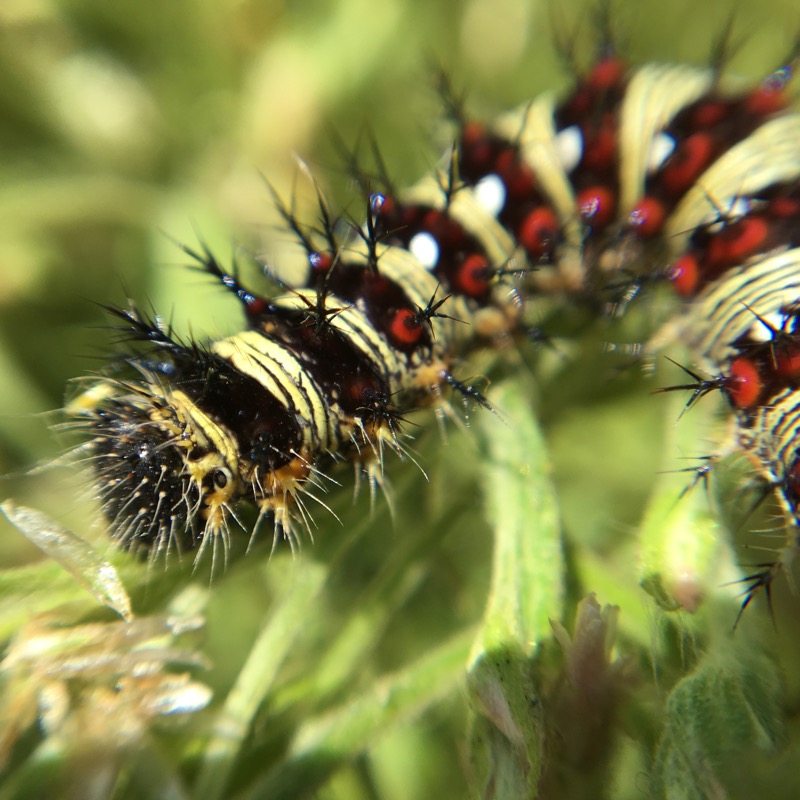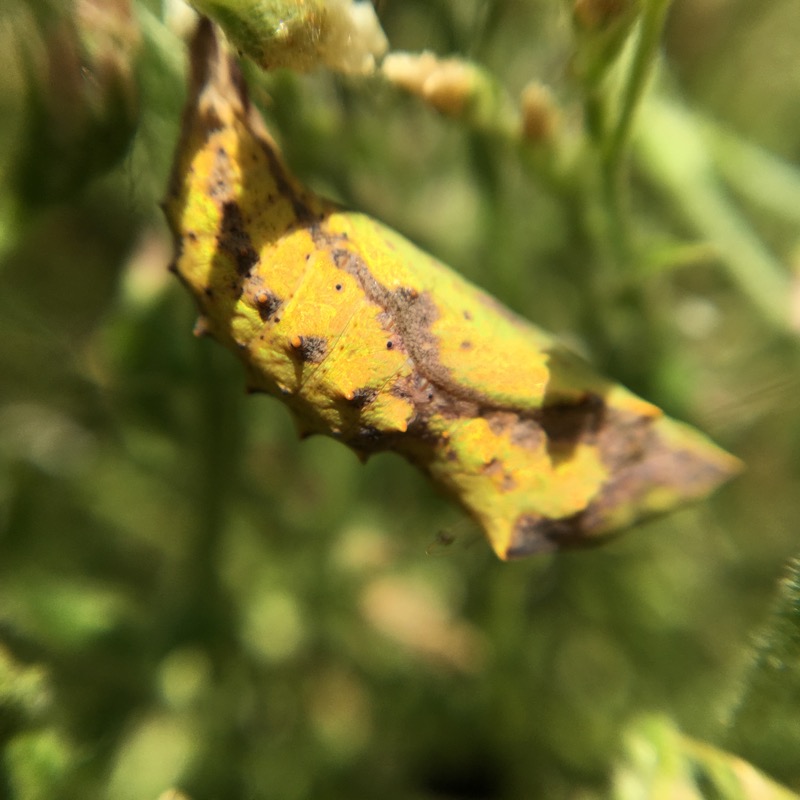 NPS Photo/Andrew Rosales
NPS Photo/Andrew RosalesFully grown larvae of the American Lady are approximately 1.4 inches in length. Their body color is variable. Some larvae are primarily yellow with thin black lines along their body segments. However, the larvae in the park show a median black band that is much wider so that the larvae appear to be black with narrow yellow lines. There is a row of large branched spines (scoli) with orange or red bases on each body segment, Abdominal segments two through eight typically have a conspicuous white spot on each side and there is usually a cream colored line that runs most of the length of their body.

NPS Photo/Andrew Rosales
The American Lady’s habitat ranges from southern Canada throughout the U.S. and into the northern half of Mexico. They may have three to four broods from May to November. The females lay single eggs on the leaves of the host plant. The larvae hatch and feed on the host plant. They also make small nests of leaves and silk. The larvae will then attach to the plant and begin the pupate phase by wiggling out of its skin to become a chrysalis. This species will also pupate in different colors depending on its surroundings. It can be yellow/green to a dull grey; from bright and shiny, to dull muted tones to match the habitat.
If you are planning to visit the park in the next few weeks, slow down and look for this beautiful lady. The American Lady Butterfly and its larvae are putting on a show right outside the Visitor Center’s front doors.
Reference: http://entnemdept.ufl.edu/creatures/bfly/american_lady.htm#dist
